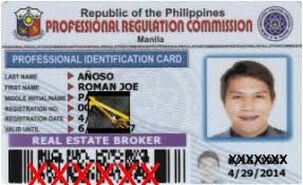Requirements to Transfer Property Title to Heirs: Land, House & Lot, or Condo If you received an inheritance from a deceased parent or relative, essential paperwork is required to transfer the property title to your name or divide it with other heirs. But what are the requirements to transfer an inherited property title?
To learn more about it, keep reading as we share the 7 documents you'll need to transfer an inherited property title, whether a land, condo, or house and lot. 1. Deed of Extrajudicial Settlement of Estate The heir should undergo the Extrajudicial Settlement of Estate if the deceased relative fails to make a Last Will and Testament. The Deed of Extrajudicial Settlement of Estate is a legal document issued by a licensed lawyer, which contains the heirs and the deceased owner's name of the inherited property title. You can ask a licensed lawyer to make an Extrajudicial Settlement and get it notarized. Also, this document contains the details of the properties and their distribution to the heirs. 2. Affidavit of Publication Another document you will need to transfer an inherited property title is the Affidavit of Publication. You can get this document from publication companies, such as newspapers. To secure an Affidavit of Publication, you should present the Extrajudicial Settlement issued by a licensed lawyer. 3. Certificate of Title To successfully transfer your inheritance, you should also prepare the Certificate of Title or the original certificate of the properties. It can be an original Certificate of Title, Transfer Certificate of Title, or Condominium Certificate of Title. 4. Tax Declaration There are two types of Tax Declaration: the Tax Declaration of Land and the Tax Declaration of the Building or House. If the lot you're inheriting doesn't have a building, house, or structure, you should obtain a Certificate of No Improvement. Meanwhile, you can secure the Tax Declaration of the inherited property title at the Assessor's Office. 5. Certificate of Non-Delinquency The Certificate of Non-Delinquency is a document proving that the inherited property title you’re transferring has no debt or pending dues on Real Property Tax. You can secure this document from the City or Municipal Treasurer’s Office. 6. Transfer Tax Clearance Aside from that, secure a Transfer Tax Clearance from the City or Municipal Treasurer's Office. This tax applies during a sale, barter, or any form of transfer of real property. The Transfer Tax Clearance is payable at the Treasurer's Office, where the property is located. 7. Certificate Authorizing Registration (CAR) Lastly, you should obtain a Certificate Authorizing Registration or CAR from the Bureau of Internal Revenue (BIR). Here are the additional requirements to get a CAR from BIR:
RemindersNote that these requirements apply to Real Property. If dividing a personal property, you'll also need a Bond Certificate from an insurance company accredited by the Registry of Deeds. Furthermore, the stated requirements above apply to the following conditions:
Nonetheless, inform the court if one of the heirs doesn't cooperate. Allow the court to distribute the property as per law. Lastly, the taxes may incur service charges and interest per annum. Thus, ensure to pay the estate tax to avoid unnecessary fees.
0 Comments
Transferring Inherited Property Title in the Philippines: Extrajudicial Settlement of Estate Most of the time, Filipinos who have inherited land or house from the deceased have trouble transferring a property title in the Philippines. In most cases, the deceased individual didn't make a Last Will and Testament, which serve as proof of inheritance to the property’s rightful heirs.
For example, your deceased parents left you and your siblings with real property. If both parents are dead, conjugal properties will be inherited by the legitimate child, given a Last Will doesn't exist. But how do you transfer a property title inherited from a deceased relative or individual? Read on as we share the 5 steps to transfer property title inherited from the deceased, assuming there’s no Last Will. 5 Steps To Transfer Property Title Inherited from Deceased 1. Get the CAR from BIR The first step to transfer a property title inherited from a deceased person is to secure a Certificate of Authorizing Registration (CAR) from the Bureau of Internal Revenue (BIR). But before getting the CAR, you should pay the Estate Tax at the BIR office where the deceased was a legal resident. For instance, you have inherited a property in Baguio City from a deceased relative who was a resident of Quezon City. In this case, the Estate Tax should be paid at the BIR office in Quezon City, where the deceased resided when still alive. 2. Visit a Publication Company The second step is to visit a publication company. It can be a newspaper company, such as SunStar and Philippine Star. Once you’ve chosen a publication company, you should bring the Deed of Extrajudicial Settlement of Estate to their office. If first time inheriting a property, you may wonder what a publication company has to do with this process. You should visit a publication Company since the Deed of Extrajudicial Settlement of Estate should be published within three (3) consecutive weeks. You should publish the Deed of Extrajudicial Settlement of Estate once every week in the city and province. It's an essential process since it's a way to inform those interested in the deceased property. Also, you should secure the Affidavit and Certificate of Publication as you have to submit these documents to BIR. 3. Go to the Treasurer’s Office Next, visit the Treasurer's Office to pay the Transfer Tax Fee. Then, obtain the Tax Clearance, which you should present to the Registry of Deeds. 4. Head to the Registry of Deeds Before visiting the Registry of Deeds, complete the requirements from the BIR, Publication Company, Treasurer’s Office, and the original documents, including the property title of the deceased. However, you should pay bonds to the insurance company if the deceased gives you an inheritance, aside from real estate property, such as cash, bonds, or cars. Remember, don’t skip this process since the Registry of Deeds will also request the necessary documents. Once you've submitted the requirements to the Registry of Deeds, wait for the issuance of the property title named after the heirs. 5. Go to the Assessor's Office For the 5th and final step, go to the Assessor's Office and request the Tax Declaration name to be changed from the deceased to the heirs. You have successfully transferred an inherited property title to the deceased property owner to their rightful heirs. Meanwhile, this step only applies if the deceased doesn't have a Last Will and Testament. This process is also applicable if there are many heirs and they are not arguing about the property. 4 Steps In Transferring A Property Title In The PhilippinesThere are four easy steps to follow when transferring the title of the property you’re buying in the Philippines. Check them out below:
1. Go to the BIR and get a CAR. You need to obtain a Certificate Authorizing Registration from BIR by submitting the requirements and paying the Documentary Stamp Tax and Capital Gains Tax. 2. Proceed to the Treasurer’s Office. If you’re buying a property in your municipality, go to the Municipal Treasurer’s Office, or the City Treasurer’s Office if you’re buying a property in the city. Present your requirements including the CAR issued by the BIR, and then pay the Transfer Tax fee if there are no issues with the property you are buying. 3. Submit all requirements to the Registry of Deeds. The requirements include the original title of the property. After paying the registration fee, wait for a few months for the release of the new title under your name. 4. Update Tax Declaration. Once you have the new property title, go to the Assessor’s Office in order to change the Tax Declaration under your name. |
Archives
July 2024
Categories
All
|
Hi! Welcome to our website. Having an agent/broker on your real estate search is a gift because with or without them the price of the property is always the same. They give you FREE SERVICE and only pure service. On your part, everything is to gain. Claim your gift now! :)
meet your Real estate Broker Partner:
Roman Joe Anoso, RN, REB
Real estate Broker PRC license number: 19887
HLURB registration number: CAR-B-05/21-029
HLURB registration number: CAR-B-05/21-029
Roman joe Anoso is a multi-awarded real estate broker, consistent Top #1 for 8 years to date, being recognized by the following companies:
Suntrust Properties, Inc.
- Overall Nationwide Top # 1 Real estate broker year 2018:
Vista Residences, Inc.
- Overall Nationwide Top # 1 Real estate broker year 2017:
Goshen Land capital, inc.
- Overall Nationwide Top # 1 Real estate broker year 2011 to 2016:
Suntrust Properties, Inc.
- Overall Nationwide Top # 1 Real estate broker year 2018:
Vista Residences, Inc.
- Overall Nationwide Top # 1 Real estate broker year 2017:
Goshen Land capital, inc.
- Overall Nationwide Top # 1 Real estate broker year 2011 to 2016:
office address: REALS Corporation, Barangay Dontogan, Baguio city, 2600
personal: +63917-5645-863
viber/whatsapp: +63917-5645-863
add him on facebook (CLICK HERE)
office landline: 074-442-2353 (for clearer conversation)
email: [email protected]
skype: romankat2
website: www.realestatebaguio.com
personal: +63917-5645-863
viber/whatsapp: +63917-5645-863
add him on facebook (CLICK HERE)
office landline: 074-442-2353 (for clearer conversation)
email: [email protected]
skype: romankat2
website: www.realestatebaguio.com
official Real Estate Brokerage Website of REALS Corporation
for our affiliate program CLICK HERE
for our affiliate program CLICK HERE

 RSS Feed
RSS Feed




